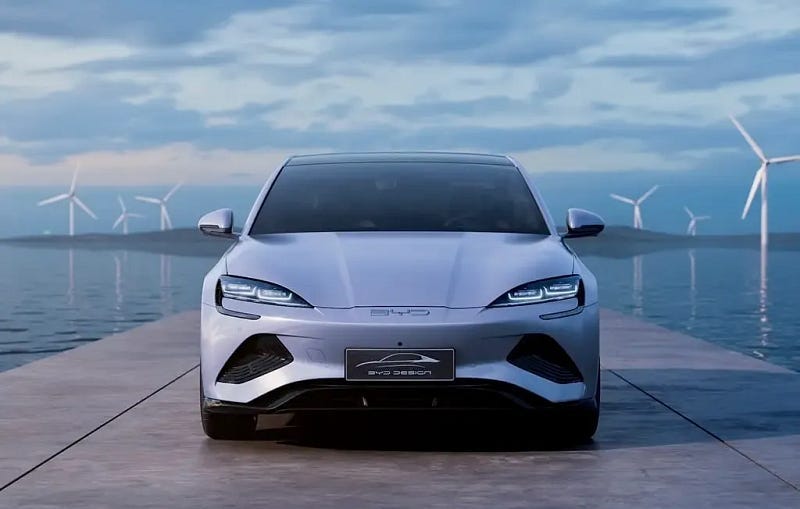Tesla's Worse Nightmare Just Got A Huge Upgrade
The Blade Battery Gen 2.

BYD is Tesla’s Bane. The two companies have entirely different ethos’s, yet have the same goal of dominating the EV world and rendering combustion-engined cars obsolete. While in the US, it might seem like Tesla is massively winning this race, BYD is actually selling more cars globally. This shouldn’t be a surprise, as BYD’s cars are significantly cheaper than Teslas, even when they offer the same or better specs. What’s impressive is that BYD can sell EVs this cheaply, all while having a greater profit margin than Tesla. How can they do this? Well, their revolutionary in-house battery pack, the Blade Battery, is significantly more cost-effective than anything else on the market. In fact, it is so good that BYD has sold and licensed it to almost every major EV manufacturer, such as GM, Hyundai/Kia, Toyota, Mercedes-Benz, BorgWarner, and even Tesla themselves! That’s right: Tesla is buying their nemesis’s battery over their own “revolutionary” 4680 cells. To say that is a bad sign is an understatement. But it’s about to get worse, as BYD is preparing to launch the Gen 2 Blade Battery.
Okay, let’s start at the beginning. What exactly is the BYD Blade Battery? And why is it so damn good? Well, The idea behind the Blade Battery is to make cheaper LFP batteries as good as the lithium-ion ones we currently use to create the high-performance, low-cost battery the EV market is desperate for.
While LFP cells cost substantially less per kWh than lithium-ion cells, they are also significantly less energy-dense and take far longer to charge. So, BYD had to find a way to make them more energy-dense and increase charge speeds without increasing the overall cost. To increase energy density while keeping costs low, they use massive prismatic blade-like cells stacked in rows (hence the name). This way, a single cell in the Blade Battery is effectively the same as an entire row of cylindrical cells in other packs. Not only does this reduce manufacturing costs, as there are fewer parts to assemble, but it also makes the entire pack lighter and smaller as its space utilization is 50% more efficient than one using cylindrical cells. To increase charge speeds, BYD opted for an 800-volt architecture, double what Tesla uses. The limiting factor for how fast a battery can charge is its current, and the higher the voltage, the lower the current for the same amount of electrical power, so this move significantly reduces the time it takes to charge the Blade Battery over other LFP packs.
Thanks to this brilliantly simple design approach, the first-generation BYD Blade Battery could charge from 10% to 80% in 30 minutes, had an energy density of 150 Wh/kg, a charge cycle lifespan of 3,000 + charges, and a cost per kWh of less than $85, and in some cases, a price as low as $55.40 per kWh! Compare that to the CATL-sourced LFP pack in the base Tesla Model 3, which can charge from 10% to 80% in just under 30 minutes, has an energy density of 125 Wh/kg, a charge cycle lifespan of 2,000 charges and a cost of $100 per kWh. It’s no wonder Tesla is turning to BYD; their batteries could save them over $1,000 per EV, and the reduced weight can help their cars go even further on a charge.
But a few days ago, BYD announced they will launch the second generation of Blade Battery as early as August! This new version will cost the same as the old one and have the same longevity and charge speeds, but it will be significantly lighter and more compact. They have done this by increasing the cells’ energy density to around 220 Wh/kg, giving the entire pack an energy density of 190 Wh/kg, which would make it the world’s most energy-dense LFP battery pack.
This increased energy density will give EVs that use the Gen 2 Blade Battery a range boost, as accelerating will be more energy efficient as the battery pack will be 75–100 kg lighter than the Gen 1 pack. This also means some cars can instead opt for a larger Gen 2 battery pack that is the same weight as the old Gen 1 pack. BYD estimated such vehicles will be able to do 1,000 km / 621 miles on the CLTC cycle, equivalent to around 520 miles WLTP! What’s more, the price of this larger Gen 2 pack will only be around $1,000 more than the old Gen 1 pack!
So, while this upgrade might only seem marginal on the surface, it could have a shockingly vast impact. Take BYD’s Blade Battery-powered Model 3 rival, the Seal. With the Gen 2 battery, its extended range variant will still cost slightly less than a Model 3 Long Range, but instead of the Model 3’s 391-mile WLTP range, it can push over 500 miles of WLTP range! But remember, it isn’t just BYD that uses this battery pack; almost every major EV player has access to this battery. Particularly as BorgWarner, an automotive parts manufacturer, has licensed the Blade Battery to produce it on US soil in their factories, negating any import tariffs blocking this technology from entering the US market. So, not only does this upgrade solidify BYD’s place as the company to go to for affordable high-performance batteries, but it could render Tesla’s expansion plans and its 4680 battery useless.
Thanks for reading! Content like this doesn’t happen without your support. So, if you want to see more like this, don’t forget to Subscribe and follow me on BlueSky or X and help get the word out by hitting the share button below.
Sources: Push EVs, Elektrek, CNC, Car Export, About Energy, E3S, Tycorun, Will Lockett, Will Lockett

